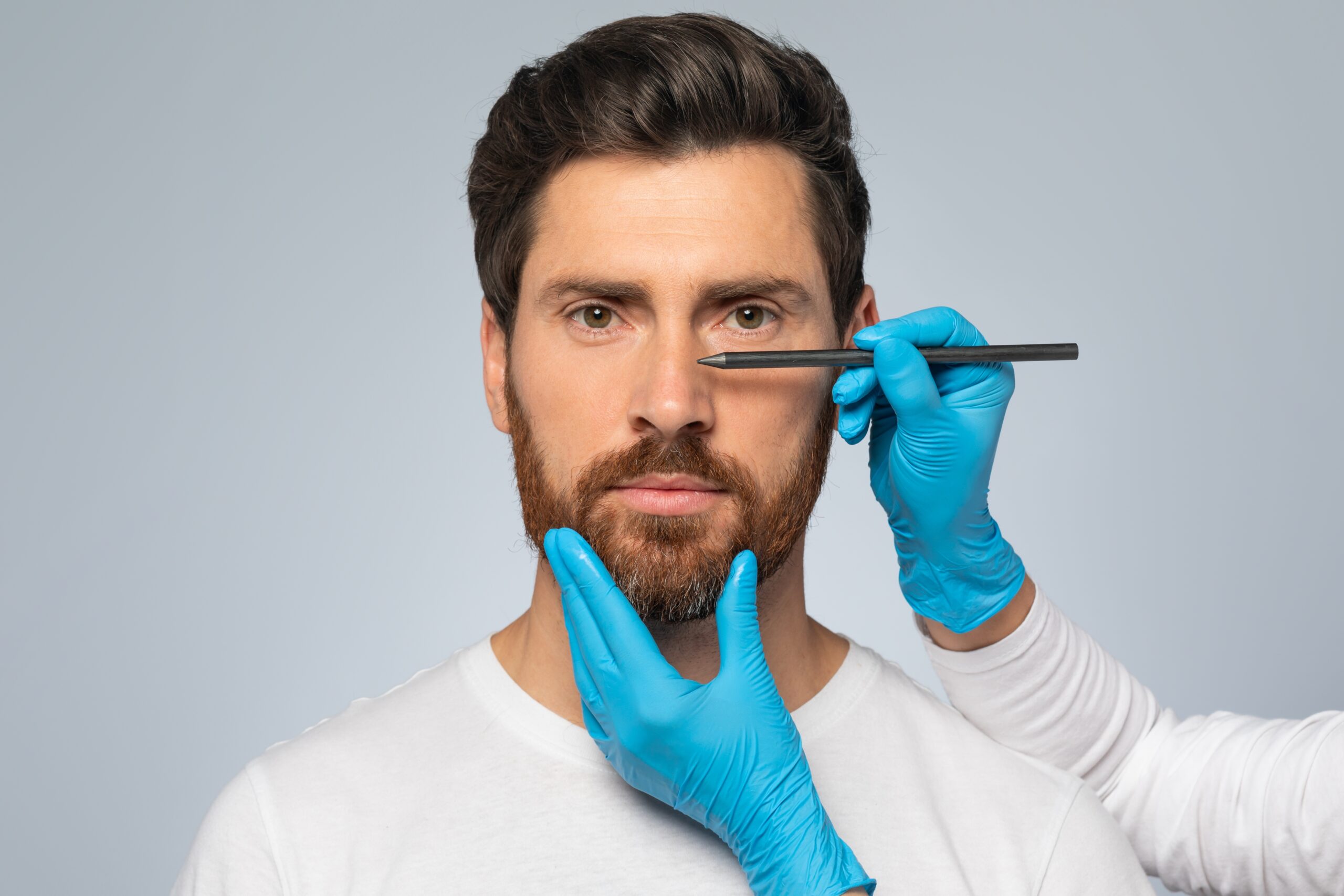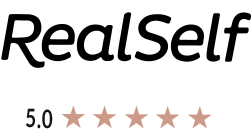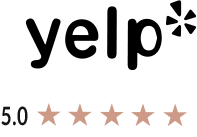
*Model
by Dr. Steven Wallach
Steven E. Greer, M.D., Alan Matarasso, M.D., Steven G. Wallach, M.D., Gary Simon, Ph.D., and Michael T. Longaker, M.D.
There is general agreement that when discussing surgery with the prospective rhinoplasty patient, one may also include discussion of the chin because of the important interrelationship between these two regions. It is apparent that on the profile-lateral view, the four prominences— the forehead, nose, chin, and neck—balance and complement one another. The cervical region, (the fourth dimension, was examined to estimate the aesthetic significance of the nasal-to-cervical relationship and to determine the implications to rhinoplasty surgery. Part I of the study was a survey to test the hypothesis that the cervical region affects the perceived impression of the nose. Four standard facial-profile black-and-white photographs were chosen to represent varying degrees of nasal dorsum hump and cervical ptosis problems. Using computer-altering software, only the cervical regions were altered to create a pair of photographs for each of the four profiles: one with a youthful-looking non-ptotic cervical region, the other with a ptotic aged-looking cervical region. Raters were asked to give their first impression opinions of which nose subjectively appeared “better.” Raters consistently (84 percent of the time) chose the nose on the faces with the less ptotic neck as being better. Therefore, a less ptotic neck improved the perceived appearance of the nose. Part II was a retrospective chart review of the rhinoplasty patients of a single surgeon by independent raters. To estimate the aesthetic significance of the nasal-to-cervical relationship, the proportion of patients undergoing rhinoplasty surgery who could have potentially benefited from a youth-restoring neck procedure was determined. Criteria originally described by Ellenbogen and Karl for judging the results of youth-restoring neck procedures were used as relative indications for neck surgery. An average of 27.2 percent of the patients did not have visible criteria and therefore by definition had relative indications for neck-rejuvenating procedures when undergoing rhinoplasty surgery. As demonstrated in part I of the study, improving the neck could improve the perceived results of the rhinoplasty. Part III of the study validated the Ellenbogen and Karlin criteria. The present authors found that the original criteria were probably based on female patients, that male and older patients had more indications for surgery, and that there was significant interrater agreement with the youthful criteria. In summary, the authors established that a strong nasal-to-cervical relationship exists whereby the perceived appearance of the nose is affected by the neck. The significance of this relationship to rhinoplasty surgery was determined, and it was found that, more than 21 percent of rhinoplasty patients could obtain better perceived nasal results with a concomitant neck-rejuvenating procedure. Consequently, discussing neck-rejuvenating procedures with the rhinoplasty patient is valuable. (Plast Reconstr. Surg. 108: 522, 2001.) When evaluating facial and nasal aesthetics, individuals are more often critical of a profile view than of a frontal view. This may be the result of fewer components comprising an acceptable profile view (forehead, nose, chin, and neck), making flaws in the profile easier to pinpoint by the layman.1-3 Furthermore, it is generally accepted that an unattractive nose detracts from the appearance of the overall face, and vice versa. Therefore, the premise of this study was that the nose should be judged in a dynamic fashion while recognizing its harmony and balance with the other related facial structures. Unbalanced facial units, such as a recessed chin or an aged and ptotic cervical neck region, may affect the perceived aesthetics of the nose. Aufricht was one of the first, known to discuss the aesthetic significance of the nose-to-chin interrelationship of the profile.4 Since this awareness, it has been generally considered acceptable and appropriate to inform rhinoplasty patients of the nose-chin relationship. This relationship has accounted for combined aesthetic procedures on the nose and chin.4-6 Surgeons should consider all aspects of related lacial anatomy when evaluating a patient for aesthetic or reconstructive surgery. When the nose is assessed on lateral view, the impact of the forehead slope and chin pogonion protrusion should also be considered. The cervical region (submental area and neck) represents the fourth critical prominence outlining the profile view. To our knowledge, unlike that between the nose and chin, the relationship between the nose and neck has not been discussed in detail in the literature.
Contents
showPurposes of the Study
The goal of part 1 of the study was to test the hypothesis that the cervical region affects the perceived aesthetic impression of the nose on profile. This relationship was termed the nasal-to-cervical relationship. In part II of the study, we sought to determine the importance of the nasal-to-cervical relationship in the rhinoplasty surgery- population by estimating the proportion of patients who had indications for enhancing a disharmonious neck region. Part III of the study examined the reliability of the criteria established for an ideal youthful neck.
Aesthetic Criteria and Anthropometrics
Ideal proportions for the nose,7-13 all aspects of facial components,1-3,14 and interrelationships of aesthetic units (i.e., nose-chin) are well established. Similarly, the lower face-throat angle,” cervico-mental angle,18 and appropriate neck parameters have been described.7,19 Angles, tangents, and distances have been drawn from fiduciary points to determine these ideal parameters. However, we have found that precise anthropometries of soft-tissue regions such as the neck can be unreliable and tedious to measure on the patient or from photographs of the patient. As an alternative, Ellenbogen and Karlin introduced six visual criteria of the profile view to rate the aesthetic results of platysma cervical lift procedures: (1) distinct inferior mandibular border, (2) visible subhyoid depression, (3) visible thyroid cartilage bulge, (4) visible anterior sternocleidomastoid border, (5) submental line-sternocleidomastoid line angle of 90 degrees, and (6) cervico-mental angle between 105 and 120 degrees7 (Fig. 1). These criteria are determined by visual inspection only and are easily evaluated in the aesthetic surgery office or operating room. We have applied them to determine the ideal appearance of the neck in either youthful or aged patients. A balanced profile is formed by many features, including a youthful, non-ptotic cervical region (submental area and neck) and adequate projection of the chin pogonion, nose, and forehead. This article focuses on the soft tissue of the cervical region; therefore, only the youthful criteria were used to determine the contribution to balance from this region. Other criteria are used to determine the balance of the other regions, which is beyond the scope of this article. We recognize that a flaw of the study is that a well-balanced neck may not be always found in the youthful population. Nevertheless, the majority of well-balanced, non-ptotic necks are seen in youthful patients. Moreover, to our knowledge a better physical reference to identify the youthful patient does not exist.
Methods
In part I of the study, the goal was to test our hypothesis that a well-balanced neck enhances the appearance of the nose. A survey was conducted among 14 persons who were randomly selected (but intentionally excluding plastic surgeons). Four different patients who had professional black-and-white profile photographs were chosen from the patients’ files (three female, one male) of the senior author. They were selected to represent a range of nasal dorsum hump problems. The chin pogonion protrusion was considered normal for all four. Three of the four satisfied the Ellenbogen youthful neck criteria for the cervical region, and one intentionally did not. Using computer software (Mirror Suite, Canfield Scientific Inc., Fairfield, N.J.) for altering the shape of images, only the cervical regions were revised to make the submental area and vertical neck appear less normal, delving the standards for an ideal neck. In the one profile that did not meet the youthful criteria in reality, the neck was computer-altered to appear younger and less ptotic. Therefore, four sets of photographs were made that differed only in the cervical region. A survey form was created for each pair of photographs (before and after computer-altering). For each pair, the following question was asked: Which nose, looks better? (Left or Right). Our goal was to obtain the rater’s opinion of the general gestalt of the profile; hence, the questions were intentionally designed to be subjective and asked which nose was “better” rather than which was larger, and so forth. Moreover, the first impression was believed to be the most important, and the photographs were shown for no more than 10 seconds for each question. The researcher held the photographs, and the same researcher conducted all of the surveys. Survey designs that only have two options for answers are called “forced choice design” by statisticians. This is an area of interest to psychologists because in real-life situations a clear choice is often unavoidable: to turn the car left or right, to buy product A or B, etc. However, forcing a decision can create negative sentiment in the rater, possibly reducing cooperation or effort from the rater and producing random results. Therefore, in a forced choice design survey, reassuring instructions should precede the survey. In this survey, the raters were instructed that there were no right or wrong answers and that simply their first impression was requested. The statistical community considers this to be a valid method. Parts II and III Part II of the study was a retrospective chart review of approximately 600 consecutive rhinoplasty patients between January of 1990 and December of 1998 of a single surgeon (A.M.). For adequate statistical analysis, only the most recent consecutive 103 cases were required for review. Of those, 81 had professional, standardized photographs acceptable for inclusion in this study. Ages ranged from 13 to 71 years, with a mean age of 29.0. Sixty-three (77.8 percent) were female and 18 (22.2 percent) were male. Of these 103 cases, 81 charts had preoperative professional photographs taken by a single photographer that, by virtue of completely including the neck, were deemed acceptable for analysis in the study. For example, photographs with hair or clothing obscuring the neck anatomy were excluded. These acceptable preoperative photographs of the 81 patients were reviewed retrospectively by two independent investigators: a third-year plastic surgery research fellow (rater 1) and a board-certified plastic surgeon who was not the operating surgeon (rater 2). The visual criteria established by Ellenbogen and Karlin for the youthful neck were used to determine the proportion of patients undergoing rhinoplasty who could have potentially benefited from a rejuvenating procedure to the neck. The proportion of patients actually receiving neck-rejuvenating procedures and those who had indications for neck procedures were calculated for comparison. Both raters described above were familiar with the Ellenbogen and Karlin criteria. Before the chart review, the authors designated only two of the Ellenbogen and Karlin criteria as “important” and to be used as criteria for relative indications for neck-rejuvenating procedures: the distinct inferior mandibular border and the cervico-mental angle. The other criteria, such as the subhyoid depression, were thought to contribute less significantly to the appearance of the neck or to be too subjective. Rater 1 assessed all six criteria, and rater 2 assessed only for the two important criteria (distinct inferior mandilular border and cervico-mental angle). Despite the pre-analysis belief that only two of the Ellenbogen and Karlin criteria were important, rater 1 assessed all six criteria to test this postulate. Assuming that the young patients generally appeared “youthful,” any of the six criteria that were not consistently evident in the young subset of the sample population were considered an unreliable indicator of youth. The results of raters 1 and 2 were then compared for agreeability and interrater variability.
Operative Approach
During the initial patient evaluation, each patient, was asked to critique his or her nasal appearance in the presence of a mirror. When indicated, the preoperative photographs were reviewed with the patient during a second consultation. If an individual had associated concerns with his or her neck or chin, an evaluation of that facial feature or body part was included. Thus, a surgical plan based on these related features of the head and neck (features below the neck were not considered directly relevant) was tailored to each patient’s needs. No alteration in rhinoplasty technique was made as a consequence of any additional neck surgery. The neck procedures were performed first and included liposuction, submentalplasty (subcutaneous liposuction and anterior platysma plication, and submuscular fat removal), or cervico-facioplasty, as indicated. The chin procedures performed in conjunction with the rhinoplasty surgery were all silicone polymer implants, placed through a submental incision. Genioplasty surgery is clearly also an option. The nasal surgery was always the final procedure. A standard Aquaplast nasal splint (WFR/Aquaplast Corp., Wykoff, NJ.) was applied, and a Surgiflex neck dressing was used when a procedure on the neck was performed. Routine postoperative instructions necessary for each individual procedure were followed.
Results for Part I
On the profiles with the less ptotic cervical region, 47 of 56 (84 percent) (14 raters times four photographs each equals 56) of the photographs were rated as having the nose look better. The remaining raters found the same to be true on the profile with the more ptotic, or older-looking, cervical region. The results were strongly statistically significant (p value = 0.0000002).
Results for Part II
For the 81 of 103 eligible patients with acceptable photographs, seven (8.6 percent) received a neck youth-restoring procedure in conjunction with their rhinoplasty because they expressed a desire for it; it was not offered by the surgeon. For all of the 81 patients, 54 (66.7 percent) to 64 (79.0 percent) of the patients, according to rater 1 and rater 2, respectively, had at least one of the two “important” Ellenbogen and Karlin youthful criteria visible on the photographs.7 Subtracting these values from 100 percent leaves 33.3 percent and 21.0 percent for rater 1 and rater 2, respectively, or an average of 27.2 percent, of the patients who did not have the criteria visible and therefore by definition had relative indications for neck youth-restoring procedures. Subtracting the 7 (8.6 percent) who did have a neck procedure indicates that an additional 24.7 percent (rater 1), and 12.4 percent (rater 2), of the 81 patients would have benefited from a neck youth-restoring procedure but received no correction.
Results for Part III
Results by Age When segregated into three age groups (0 to 29, 30 to 49, and >50 years of age), the indications for neck procedures based on these criteria increased significantly with age (Table I). As described in the section on interpretation of statistics, the p values are derived from the logistic regression model. A statistically significant p value (<0.05) for a criterion means that there was significant difference between the three age groups particular criterion. all criteria had differences among except visible thyroid cartilage category. these data show five of six youthful neck declined with increasing to statistically significant degree. figure 3 presents visual comparison ellenbogen and karlin respect proportion patients who as viewed by rater 1 only (rater 2 assessed two “important” criteria). note decreased age; however, not significant. proportions received concomitant neck-rejuvenating procedures their rhinoplasty, group, are follows: (1) <29 (n = 49): l, or 2 percent; (2) 30 to 49 (n = 26): 3, or 11.5 percent; (3) >50 (n = 6): 3, or 50 percent; (4) all ages (n = 81): 7, or 8.6 percent. Note that only one of the patients was in the under-30 age group. Results by Gender Segregated by gender, male patients more frequently had indications for neck procedures than female patients (Table II). A statistically significant p value (<0.05) for a criterion means that there was significant difference between the female and male patients particular criterion. had fewer visible criteria than in all six categories. differences youthful neck were except thyroid cartilage anterior sternocleidomastoid border.
Discussion
The appearance of the nose on profile view is often a primary concern of rhinoplasty patients. Furthermore, the overall appearance, or the interrelationship among facial aesthetic units, contributes to nasal appearance and overall symmetry. Accordingly, surgery on related aesthetic units can have a beneficial effect on the primary source of patient concern. This tenet is commonly applied to the nose-chin relationship.4,5 In 1958, Aufricht was one of the first known to discuss the aesthetic significance of the profile of the nose-chin interrelationship.4 He wrote, “The nose and the chin are conspicuous components of the profile line, and there is a marked aesthetic interrelation between the two. The prominence of one will influence the relative prominence of the other.”4 It was also convenient, while using the techniques of his day, to use the osteocartilaginous material removed during the rhinoplasty to augment the chin. He reported that 25 percent of all of his rhinoplasty patients received simultaneous procedures to augment the chin. In 1965, Millard described a 15 percent incidence of simultaneous rhinoplasty and chin implants in a series of 1000 rhinoplasty patients.5 Since this awareness, it has been appropriate for surgeons advising their rhinoplasty patients to discuss the relationship between the chin and nose and the combined effect on the overall profile. However, any imbalance or undesirable interrelation of the face, not just the nose-chin relationship, will disturb the aesthetic balance. Although rarely altered, surgeons frequently point out the lack of forehead prominence and its exacerbation of the perceived nasal projection. A disharmonious cervical region can be another source of such an imbalance. Part I of the study strongly confirmed that even minimal ptosis of the cervical region typical of aging detracts from the perceived aesthetic balance of the nose, chin, and overall facial profile. The opinions were nearly unanimous (84 percent of the photographs with the non-ptotic, youthful cervical region were rated as having a better nose). The strength of this nasal-to-cervical relationship was unexpected, and we believe it was for two reasons. First, because it is accepted that a stronger pogonion region of the chin improves the nasal appearance, we postulate that a less ptotic neck gives the appearance of a stronger chin, thereby improving the nose. Second, the profile reflects four prominences {forehead, nose, chin, and neck). Therefore, the more components that are enhanced, the greater the overall improvement, and the nose is part of the better result. In part. II of the study we estimated the significance of the nasal-to-cervical relationship by determining the proportion of patients undergoing rhinoplasty surgery who could have potentially simultaneously benefited from a neck-rejuvenating procedure. We compared this with the proportion who actually received such a procedure. We used the criteria originally described by Ellenbogen and Karl in for judging the results of neck-rejuvenating procedures as relative indications for neck surgery. In this series of 81 patients, 8.6 percent (seven patients) received a concomitant neck procedure with their rhinoplasty. Although only 8.6 percent of our series had simultaneous surgery of their neck and nose, we recognize that a greater number could eventually undergo both procedures separately; this was not accounted for in our data. Another 18.6 percent of the remaining patients could have benefited from a neck-enhancing procedure. Therefore, 27.2 percent of rhinoplasty patients in this study group did not have any visible criteria of a youthful neck and would benefit a concomitant neck procedures. In part III of our study, we evaluated the published criteria of a youthful neck. For our analysis to be meaningful, our working fundamental premise that the accepted criteria were appropriate instruments for distinguishing the youthful neck profile had to be true. The original article by Ellenbogen and Karlin, although logical and intuitive, did not provide supporting data. The data from our study support this premise because the proportions of patients having the visible youthful criteria, when segregated by age, consistently decrease with age. Although this may seem obvious to the medically and artistically trained eye, scientists know that assumptions of obviousness are often incorrect. Validation of the original criteria and establishment of objective indications for neck-rejuvenating surgery were unforeseen by-products of the study. Before the study began, the authors designated only two of the Ellenbogen and Karlin criteria as “important”; that is, to be used as criteria for indications of neck-rejuvenating procedures: the distinct inferior mandibular border and the cervico-mental angle. On the basis of personal experience and judgment of the authors, the other criteria (such as subhyoid depression) were thought to contribute less significantly to the appearance of the neck or to be too subjective to accurately review on photographs. Importantly, these pre-study opinions were validated by the analysis of statistical significance after rater 1 assessed the photographs for all six criteria. The p values between age and sex comparisons for the two important criteria were among the most statistically significant of the six Ellenbogen and Karlin criteria. Only the visible subhyoid depression criterion achieved comparable p value significance. The visible thyroid cartilage, not designated as one of the two important criteria, did not reach statistical significance in separating the patients either by age or by gender. That is, only the visible thyroid cartilage success rate would be deemed to not change significantly with age and therefore to not be an indication of youthful appearance. Reliable youthful criteria should be consistently present in youth but not in older ages. The visible anterior sternocleidomastoid border achieved statistical significance for age but not for gender. The sub-mental line—sternocleidomastoid line angle achieved p value significance in both gender and age but not to the extent of the two “important” criteria. The indications for neck-rejuvenating surgery intuitively increased steadily with age. This was statistically significant for five of the six criteria. Interestingly, male patients had indications for neck surgery more frequently than female patients when adjusted for age—a finding not previously reported, to our knowledge. The more prominent thyroid cartilage and mandible of the typical male patient would seem to be more visible than that of the female patient, but this was not the case in our study. This may be because of weight differences that occurred by chance between the genders within our sample population, or because of anatomical differences in the faces between the sexes. We recognize that a potential flaw of this retrospective study is that strict weight data were not included in the analysis. The original article describing the criteria for a youthful neck7 made no specific reference to gender, although all photographs were of female patients. Therefore, we worked on the premise that the criteria were not gender-specific. Based on our results, it is our opinion that the criteria are more valid for female patients, given the difference in cervical anatomy between genders; male patients tend to have broader and relatively shorter necks that obscure the landmarks of the criteria. The Ellenbogen and Karlin criteria are inherently subjective with interrater variability. We tested this by having the photographs reviewed by two surgeons with intentionally different levels of training: a third-year plastic surgery research fellow (rater 1) and a board-certified plastic surgeon (rater 2). The kappa statistic20,21 was used to assess agreement, and it was found that the level of agreement significantly exceeded that expected by chance alone (Table III, Fig. 5). Thus, surgeons of various levels of training can reliably use the criteria. We recognize that intrarater variability was not tested in this study. For many reasons, attention has largely focused on two structures in the profile: the nose and the chin. Being more solid structures than the surrounding face, the nose and pogonion region of the chin are more distinct targets for alteration. Perhaps also because of the popularity and feasibility of genioplasty procedures at the time and, historically, the relatively increased difficulty in altering neck contour in the past, the chin was frequently assessed when planning rhinoplasty surgery. However, over the past two decades surgeons have rapidly acquired the ability to readily alter the neck with liposuction, submentalplasty, cervico-facioplasty, and, more recently, with Botox injections (Allergan, Irvine, Calif.) for platysma cords. Advancing age increases the chance for patients to have relative indications for procedures to restore a youthful neck and balance the profile view. Therefore, a comparison between the proportion of rhinoplasty patients who receive, or have indications for, neck procedures must be age-adjusted. Surgical procedure statistics collected by the American Society of Plastic Surgeons indicate that the proportion of all rhinoplasties being performed on the older population is increasing. The age group of 51 to 64 years accounted for 5 percent of all “nose reshaping” procedures in 1992 and 9 percent in 1998; an 80 percent increase.22 Our data indicate that this is the same age group that would most frequently benefit from a neck-rejuvenation procedure. To adequately address the facial appearance, particularly in the profile view, the neck should be considered in the nasal-to-cervical relationships. One might carry this nasal-to-cervical relationship a step further and postulate that any additional surgery to the face (e.g., face lift, blepharoplasty) might enhance the results of the rhinoplasty, leading to the question, “Where does it end?” Although this may or may not be supported with future research, the outlining contours of the chin and forehead (as opposed to non-outlining structures, such as eyelid wrinkles) are already accepted as being important to the related nasal contour. We believe that the cervical region represents the fourth important contour that has not been emphasized in the literature to date. Moreover, enhancing the neck can improve the established nasal-to-chin relationship.
Conclusions
In our review of the relative importance of neck surgery in rhinoplasty patients, we conducted a three-part study. Part I demonstrated the strong nasal-to-cervical relationship: even minor improvements to a ptotic cervical region improve the perceived appearance of the nasal profile.
Paris II and III used the Ellenbogen/Karlin youthful neck criteria to demonstrate the following:
- Male patients more frequently have indications for neck-rejuvenating surgery than female patients.
- Advanced age has a strong inverse relationship with the criteria for a youthful neck,
- Youthful neck criteria have low interrater variability and therefore are reliable among surgeons with different levels of experience.
- Although it is recognized that 15 to 25 percent of all rhinoplasty patients will benefit from concomitant chin augmentation surgery, our data support the conclusions that the neck represents the fourth critical balance point of the profile view. Enhancing the neck by any number of techniques will improve the appearance of the nose and the overall profile.
- In our study population, 27.2 percent of the rhinoplasty patients could have benefited from a concomitant neck-rejuvenating surgery and have received better perceived rhinoplasty results.
ACKNOWLEDGMENTS
The authors thank Canfield Scientific for their assistance with the Mirror Suite software, and Karen Lee for assistance with the preparation of the manuscript.
REFERENCES
- Farkas, L. C., Hreczko, T. A., Kolar. J. C, et. al. Vertical and horizontal proportions of the face in young adult North American Caucasians: Revision of neoclassical canons. Plast. Reconstr. Surg. 75: 328, 1985.
- Farkas, L. G. , and Kolar. J. C. Anthropometries and art in the aesthetics of women’s faces, Clin. Plast. Surg. 14: 599, 1987.
- Ricketts, R. M. Divine proportion in facial aesthetics. Clirt. Plast. Surg. 9: 401, 1982.
- Anliitln. G. Combined plastic surgery of the nose and chin: Resume of 27 years of experience. Am. j. Surg. 95: 231, 1958.
- Millard, D. R. Adjuncts in augmentation mentoplasty and corrective rhinoplasty. Plast. Reconstr. Surg. 36: 1, 1965.
- Safian, J. Progress in nasal and chin augmentation. Plast. Reconstr. Sing. 37: 446, 1966.
- Ellenbogen, R., and Karlin, J.V. Visual criteria for success in restoring the youthful neck. Plast. Reconstr. Surg. 66: 826, 1980.
- Burget, G. C. and Menitk, F. J. (Eds.). Aesthetic Reconstruction of the Nose. St. Louis: Mosby-Year Book, 1994, Pp. 1-13.
- Byrd, H. S-, and Hobar, P. C. Rhinoplasty: A practical guide for surgical planning. Plast. Reconstr, Surg, 91:642, 1993.
- Constantian, M. B. A model for planning rhinoplasty. Plast. Reconstr. Surg. 79: 472, 1987.
- Daniel, R. K. (Ed.). Aesthetic Plastic Surgery: Rhinoplasty. Boston: Little, Brown, 1993. Pp. 79-108.
- Guyuron, B. Precision rhinopliisty: Part I. The role of l














